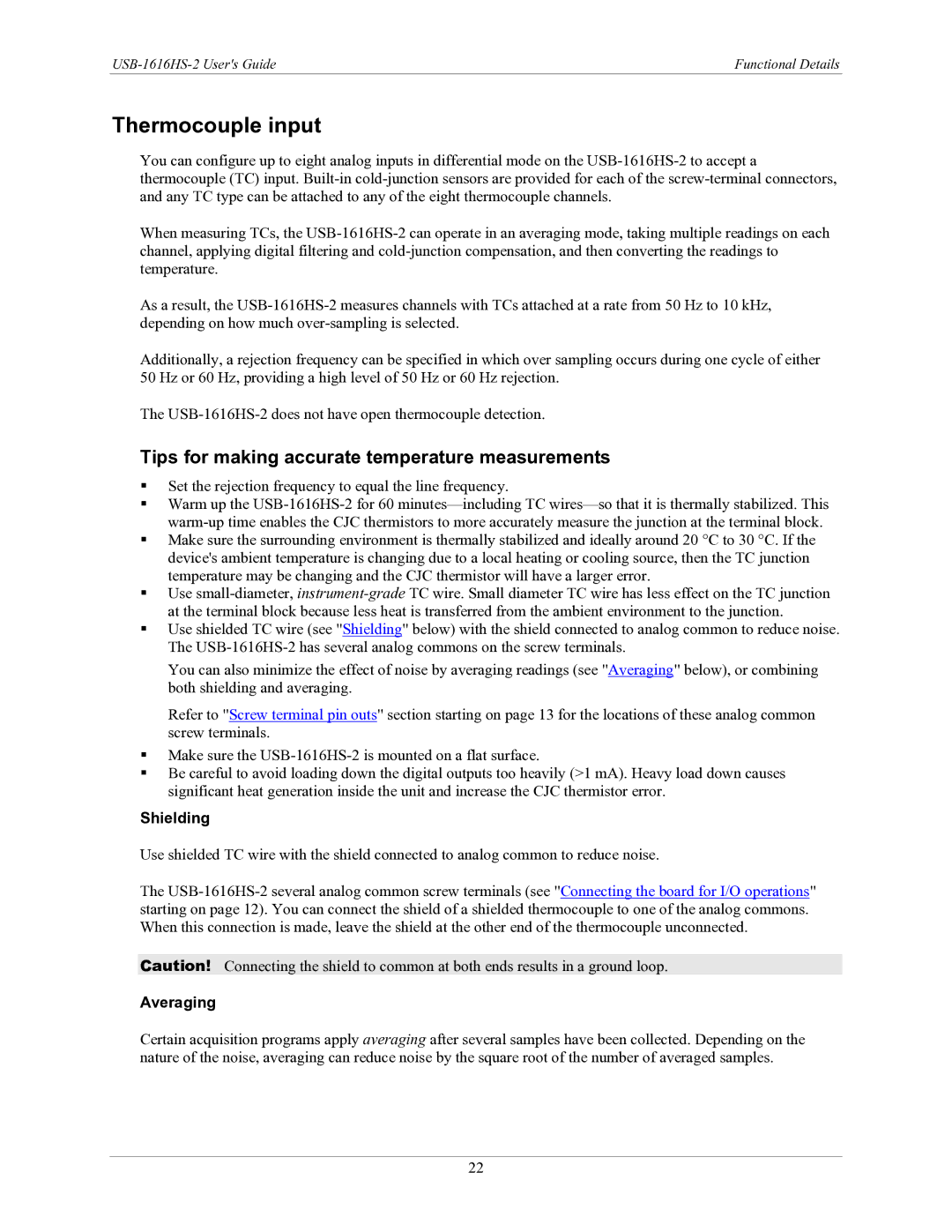
| Functional Details |
Thermocouple input
You can configure up to eight analog inputs in differential mode on the
When measuring TCs, the
As a result, the
Additionally, a rejection frequency can be specified in which over sampling occurs during one cycle of either 50 Hz or 60 Hz, providing a high level of 50 Hz or 60 Hz rejection.
The
Tips for making accurate temperature measurements
Set the rejection frequency to equal the line frequency.
Warm up the
Make sure the surrounding environment is thermally stabilized and ideally around 20 °C to 30 °C. If the device's ambient temperature is changing due to a local heating or cooling source, then the TC junction temperature may be changing and the CJC thermistor will have a larger error.
Use
Use shielded TC wire (see "Shielding" below) with the shield connected to analog common to reduce noise. The
You can also minimize the effect of noise by averaging readings (see "Averaging" below), or combining both shielding and averaging.
Refer to "Screw terminal pin outs" section starting on page 13 for the locations of these analog common screw terminals.
Make sure the
Be careful to avoid loading down the digital outputs too heavily (>1 mA). Heavy load down causes significant heat generation inside the unit and increase the CJC thermistor error.
Shielding
Use shielded TC wire with the shield connected to analog common to reduce noise.
The
Caution! Connecting the shield to common at both ends results in a ground loop.
Averaging
Certain acquisition programs apply averaging after several samples have been collected. Depending on the nature of the noise, averaging can reduce noise by the square root of the number of averaged samples.
22
